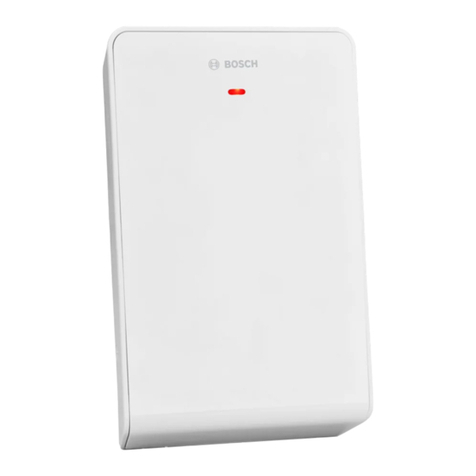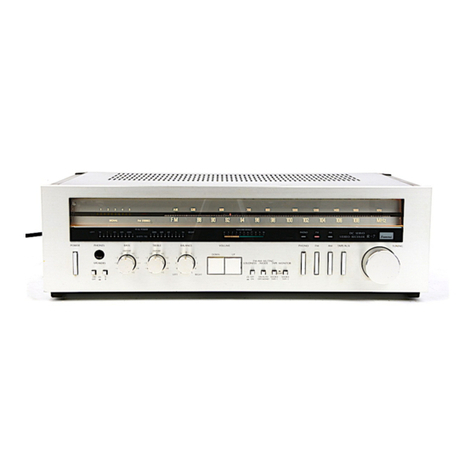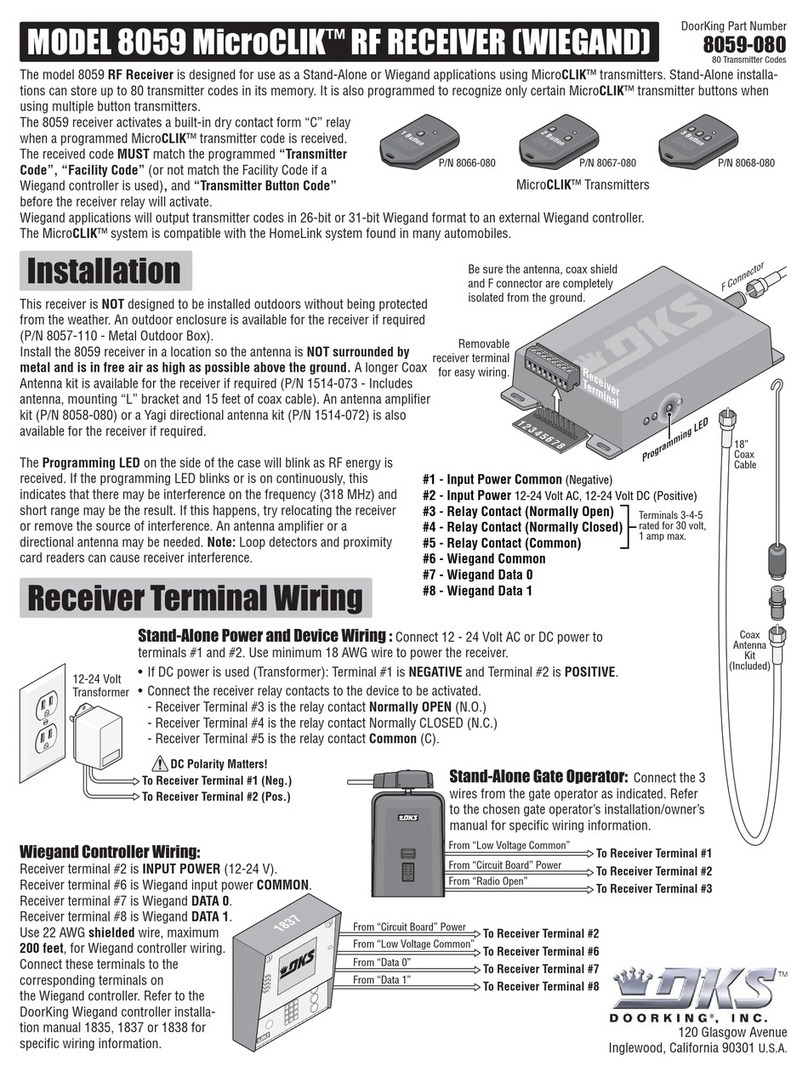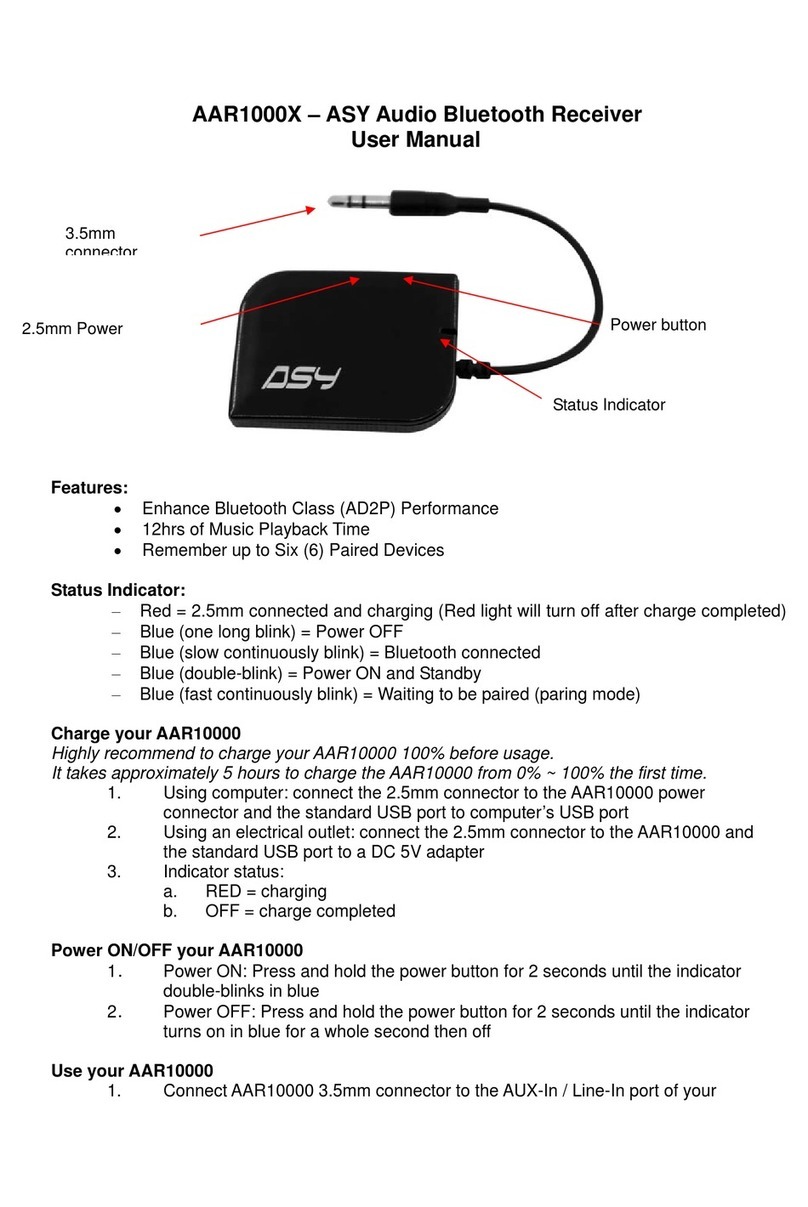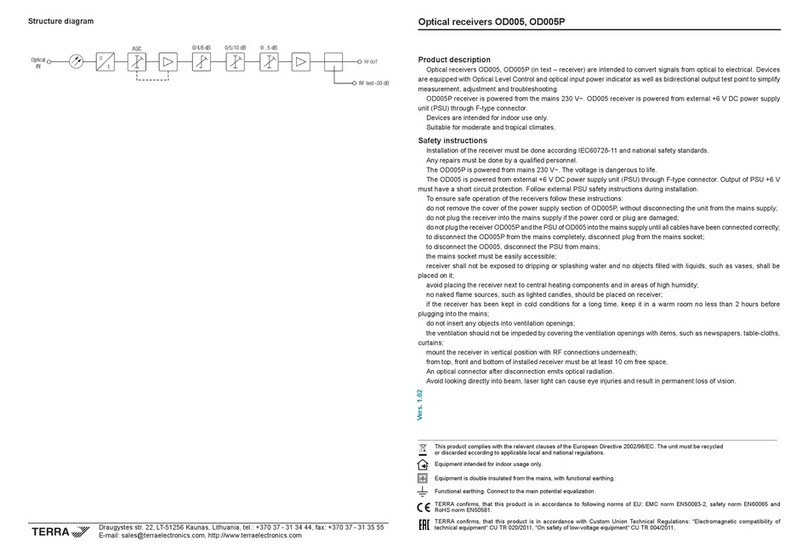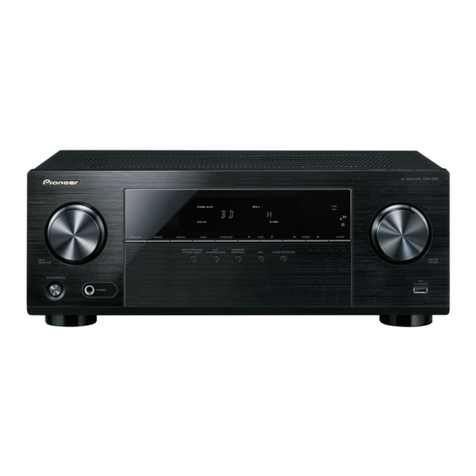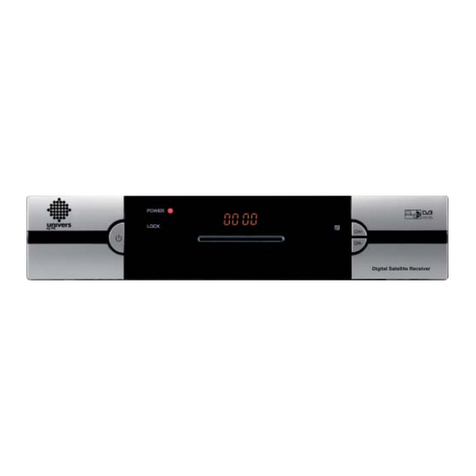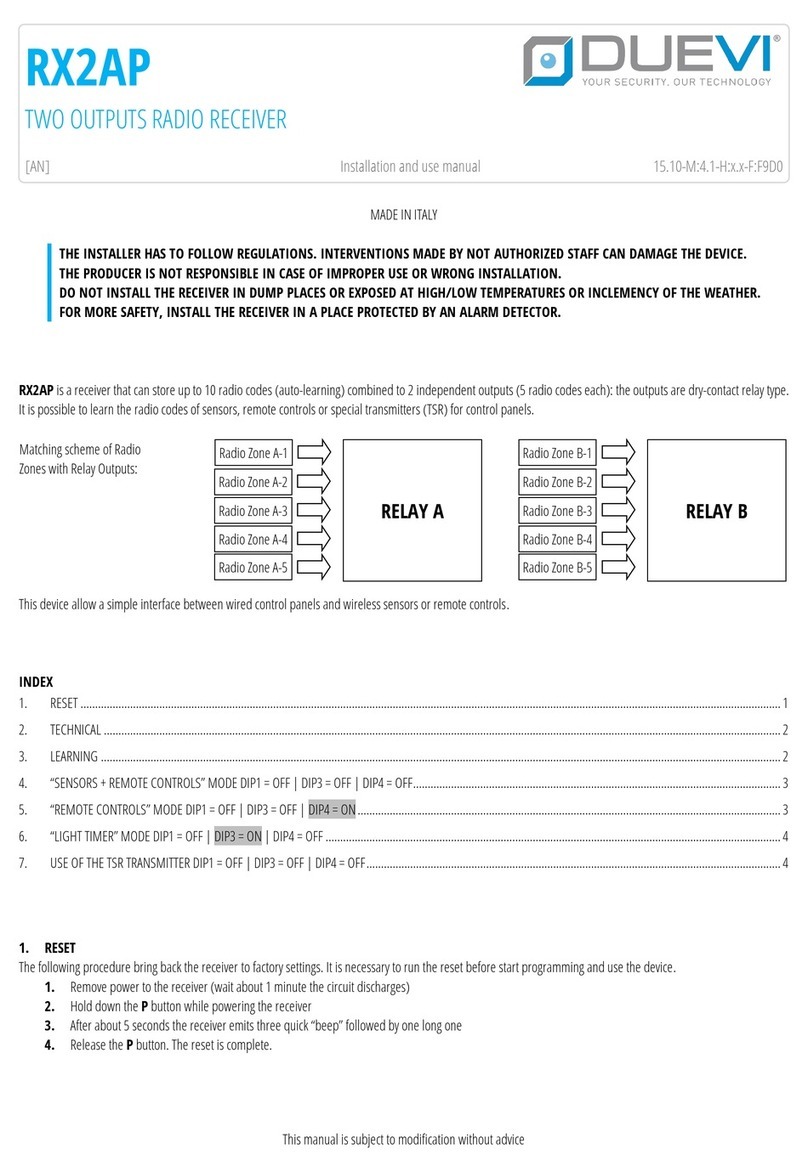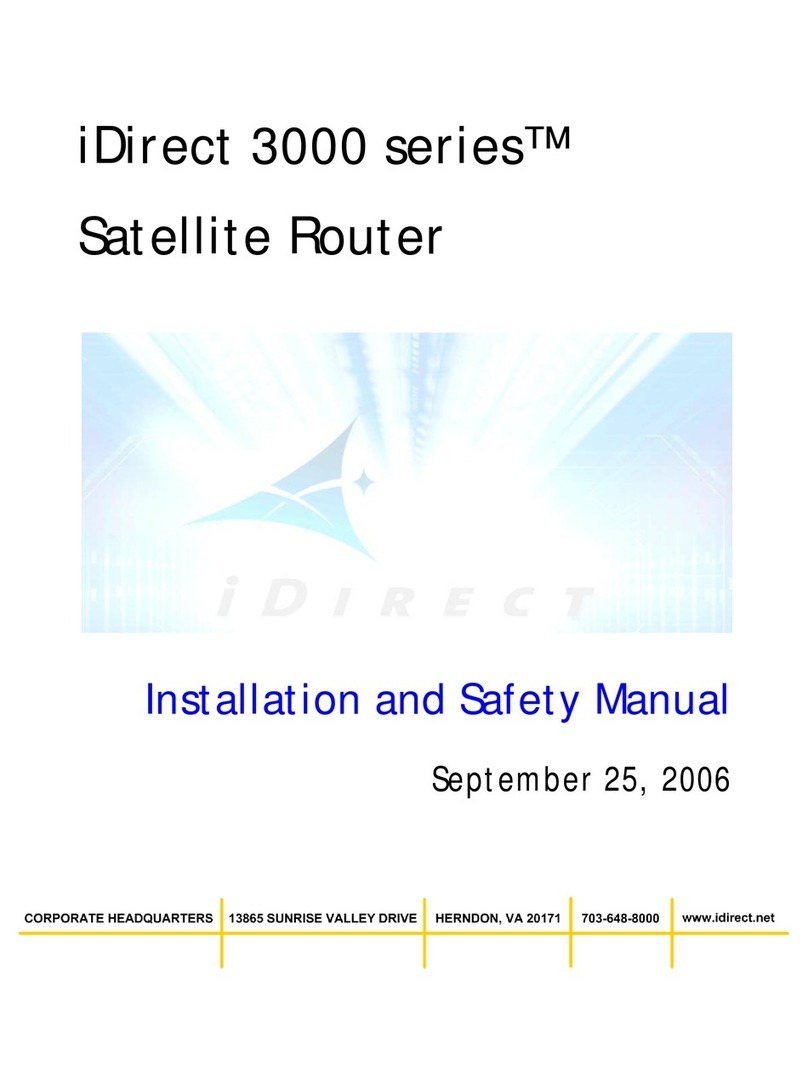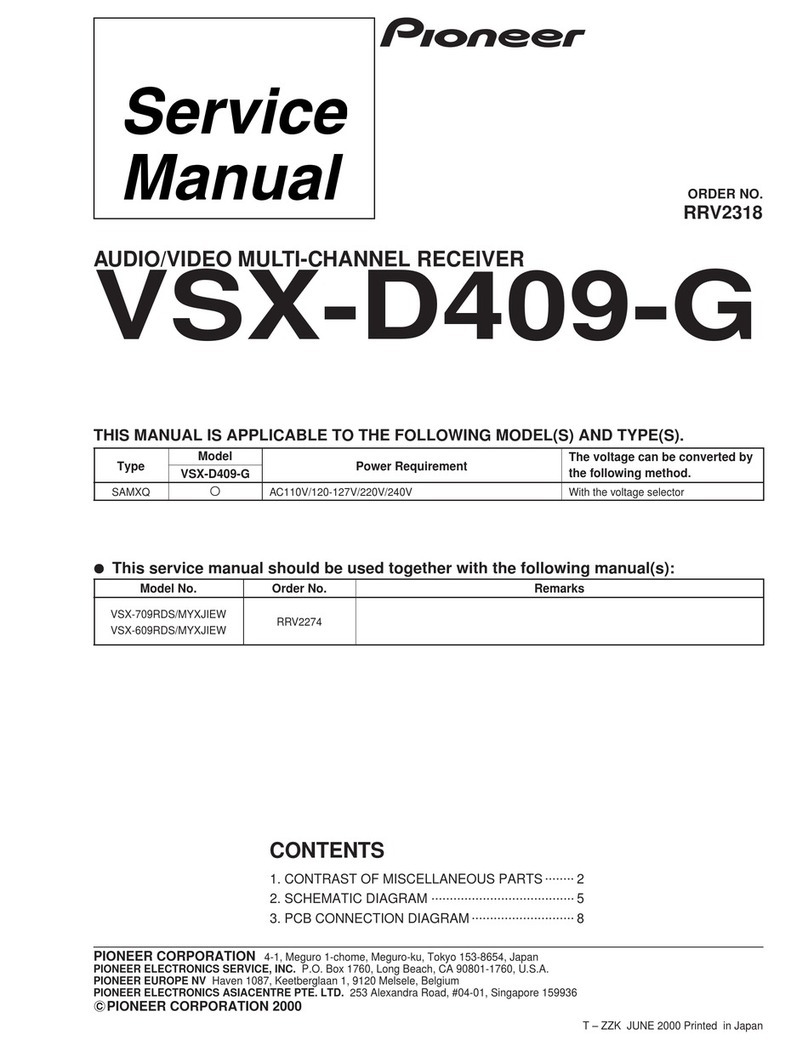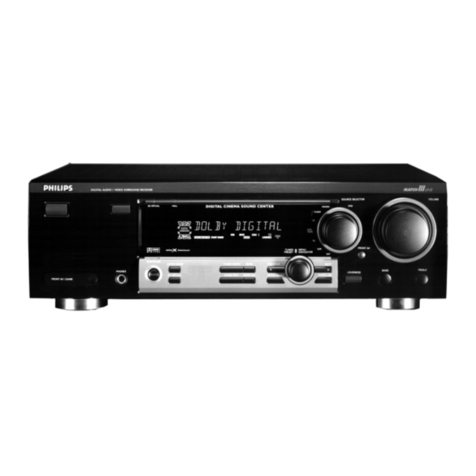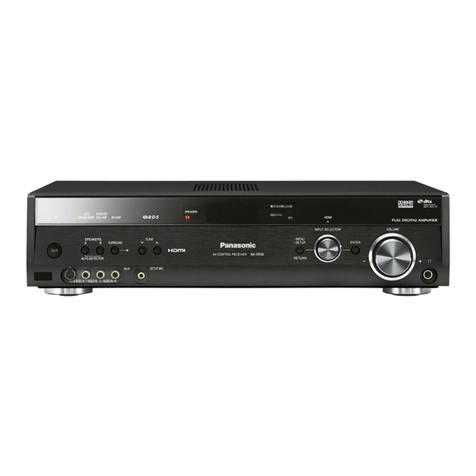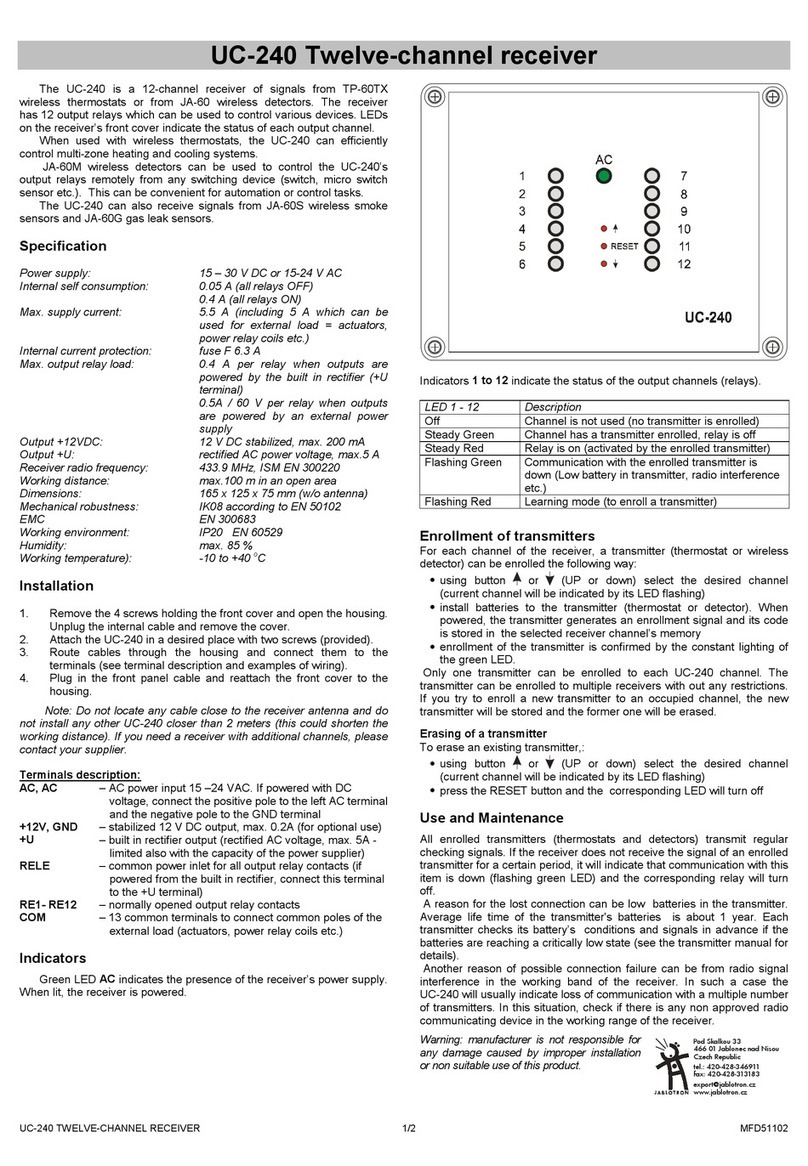Jesmay Electronics JM2318R User manual

2.4GHz Digital Wireless A/V
Sender
OWNER’S MANUAL
˄PLEASE READ BEFORE USE˅
PLEASE CONSULT THE BACK COVER OF THIS
OWNER’S MANUAL FOR MODEL AND FEATURE

ƵImportant-Safety Precautions
xTo prevent fire or shock hazard, do not expose this device to rain or moisture.
Does not use near a bathtub, washbowl, kitchen sink, or laundry tub, in a wet
basement, or near a swimming pool.
xTo avoid electrical shock, do not open this device.
xThis device should be operated to use only the power supply included with it
or provided as an accessory.
xDo not overload wall outlets and extension cords as this can result in the risk
of fire or electrical shock.
xDo not attempt to service this device yourself. Refer servicing to qualified
personnel only.
Caution: Changes or modifications not expressly approved by the
Party responsible for compliance could void the user’s authority to
operate the equipment.
1
A. Checking Contents of Box
Checks and make sure that all of the items shown as below are included with
your 2.4 GHz Digital Wireless A/V Sender System. If something is missing,
please contact your dealer as soon as possible.
1. Transmitter h1
2. Receiver h1
3. Power adapter (optional) h2
ƶ(120VAC to 5VDC)
DC in Jack ( 5V 1A)
4. IR extender
to connect to transmitter h1
5.Connector cables (Optional) h2
ƶ3RCA plug to 3RCA plug AV cable
6. Owner’s manual h1
2
NOTE: This equipment has been tested and found to comply with Part
15 of the FCC Rules, or R&TTE CE directive. These limits are designed
to provide reasonable protection against harmful interference in a
residential installation. This equipment generates, uses and can radiate
radio frequency energy, if not installed and used in accordance with the
instruction, it may cause harmful interference to radio communications.
However, there is no guarantee that interference will not occur in a
particular installation. If this equipment does cause harmful interference
to radio or television reception, which can be determined by turning the
equipment off and on, the user is encouraged to try to correct the
interference by one or more of the following measures:
xReorient or relocate the receiving antenna.
xIncrease the separation between the equipment and receiver.
xConnect the equipment into an outlet on a circuit different from that to
which the receiver is connected.
xConsult the dealer or an experienced radio/TV technician for help
IMPORTANT NOTE: To comply with the FCC RF exposure compliance
requirements, no change to the antenna or the device is permitted. Any
change to the antenna or the device could result in the device exceeding the
RF exposure requirements and void user’s authority to operate the device.

B. Introduction to 2.4GHz Digital Wireless A/V Sender
Congratulations on purchasing this 2.4GHz Digital Wireless A/V
Sender. This sender system is a digital wireless audio/video sender
that uses 2.4GHz Frequency Hopping technology and GFSK
modulation, andrandom ID codes to protect personal privacy.
There are over billion hopping sequences to minimize interference
and deliver consistently an excellent video and audio quality up to
100 meters away.
This sender system also integrates an IR remote control extender to
allow you to control the audio or video source from another room
using your existing remote controller.
Using this 2.4GHz Digital Wireless A/V Sender, you can enjoy
greater convenience and security in many ways:
General Application
xWatch the movie you rent on any TV in house without moving
your DVD, laser disc player or running messy cables.
xWatch cable or satellite programs on any TV in house.
xListen to stereo-quality music from your receiver on any powered
speakers inside or outside the house.
Safety & Security Application:
xConnect a camera as a wireless security system.
xMonitor your sleeping baby, playing children, the elderly, or the
disabled on TV using your existing camcorder.
xSee who is outside the door on TV through your camera or
miniature CCD camera.
xMonitors and records the meeting from another room.
xAnd many more uses!
3
Ƶġ
The Using Attention
The outlet of the power supply must have the same voltage as the
local area.
1. Be sure the transmitter and the receiver were connected to the
equipment correctly (e.g. Connect the transmitter to the DVD or
VCR, and the receiver to the TV).
2. When DC plug is pulled out from transmitter or receiver, it needs
to wait for a few seconds in order to insert it again.
3. When switch is off from transmitter or receiver, it needs to wait for a few
seconds in order to restart again.
4. Before you use, you must follow the instructions to complete the
pairing code action.
5. Adjust antenna for least interference. (vertical or horizontal)
6. In most situations, one set of equipment has a better feature within 100
meter. When two equipment or more is used at the same time, It can
automatic jump to different channels. But the distance between
transmitter and transmitter (receiver and receiver), preferably greater than
1 meter above.
7. To be ensure the best remote control, please do not place the receiver
under strong light.
8. Adjust antenna for least interference. (vertical or horizontal)
9. If there are some reasons cause the devise stop, you can try to turn power
switch off then on again and make the devise re-link.
10. The remote control should face to the IR window of he receiver (there
is an IR marker), and the transmitter IR extender should face to the IR
window of the source A/V equipment. The IR remote control has to be
within the standard distance.
11. To be ensure the best remote control, please do not place the receiver
under strong light.
4
When the devise working, it will produce heat, so do not cover the

2.4G Antenna
DC power input Jack
device with clothes or other things.
C. Product Layout
The following illustrations and show the names of each component,
button and switch connectors on the transmitter and receiver.
FRONT VIEW
TRANSMITTER RECEIVER
REAR VIEW FOR TRANSMITTER
5
l REAR VIEW FOR RECEIVER
CH4 (NTSC only)
RF output to TV
(e.g.2058R)
D. Setting Up 2.4GHz wireless A/V Link
To enjoy wireless video and audio, just connect the transmitter to
whatever audio/video source you want to enjoy from another location,
and connect the receiver to the TV, monitor or powered speakers in
that other location.
6
A/V output
Power switch
PAIR Button
Pairing switch
IR WINDOW
PAIR Button
LINK LED
LINK LED
2.4GHz
Antenna
DC power input
Jack
Power Switch A/V Input IR Extender Port

A/V link system is suggested to connect to following A/V equipment use:
Video sources˖Audio sources˖
VCR Compact Disk player or Changer
Cable set-top box (with A/V output)Stereo Receiver
Satellite Receiver Cassette Deck
Laser Disc Player
Camcorder or Miniature CCD Camera
Digital decoder
DVD
7
ˍġHow to pair the transmitter and receiver
Before shipment of this product has been matching ID code, you can
instantly use. If you want to re-pair your code, you have to comply
with the following instructions to the matching code.
Please see the follow pairing operation.
1. The first, push the power switch of transmitter and receiver and
turn on both power switch. Then you can press the PAIR button
on the front of the transmitter and not release until the LINK LED
on the front of the transmitter begins to flash then you can release
the PAIR button, and then the transmitter starts toenter the
pairing state and automatically link ID code to the receiver.
2. During the LINK LED of transmitter is in flash state (around 35
seconds.), you need to press the PAIR button on the front of the
receiver and not release until the LINK LED begin to flash then
you can release the PAIR button, and then the receiver starts to
enter the pairing state and automatically link ID code to the
transmitter.
3. Please don’t turn off their power switch during the receiver and
transmitter is linking ID code with each other. When transmitter
and receiver complete the matching code, their LINK LED will
be lit directly. That means they have completed the pairing of
work.
8
ƵġHow To Transmit Audio/Video from Your VCR or DVD
Connect VCR and transmitter with a 3RCA plug to 3RCA plug AV cable, just
plug RCA plugs to RCA sockets of VCR and plug to A/V in port of transmitter.
Note: When you use a set the transmitter and receiver
which has a pairing ID code, If you turn on the transmitter
or receiver, you will find the link LED will lightfor 3
seconds, then off, and it will automatically start to pair to
receiver or transmitter.If it finds matching objects, the
link LED will be lighting, and if the time, the transmitter
was connected with DVD or SAT., or VCR and the receiver
was connected with TV, and then you will be able to watch
the program of DVD or SAT., or VCR on your TV. If it
can not find the matching object, it will always send
matching code until it finds a matching object.

If your VCR has only SCART socket for audio/video output, you can use a
SCART/RCA adapter (not included) to connect the RCA plug of the
transmitter and the SCART socket of VCR. Please follow the instruction figure
below.
1. Plug one end of the power adapter into the back of the transmitter and the
other end into any AC wall outlet. Use only the adapter provided.
2. If you VCR have only one set of A/V output jacks and you want to use it
with a nearby TV. Connect 75ohm RF coaxial cable (not included) from the
modulator signal OUT port on your VCR to the RF IN port on your TV.
(Note: In order to also view cable programs on that TV, connect your
incoming cable TV source to the IN port of the VCR.)
3. Locate and orient the transmitter according to the section of this manual
titled "Orienting Units for Optimum Performance"for best performance of
transmitter.
9
ƵHow To Transmit RCA from Your Satellite Receiver
You can transmit audio/video either directly from your satellite receiver, or by
connecting them to your VCR. To transmit directly from your satellite receiver,
follow the instructions below.
1. Connect satellite receiver and transmitter with RCA cable, just plug RCA
plugs to RCA sockets of satellite receiver.
If your satellite receiver has only SCART socket for audio/video output, you
can use a SCART/RCA adapter (not included) to connect the RCA plug of the
transmitter and the SCART socket of VCR. Please follow the instruction
figure below.
2. Plug one end of the power adapter into the back of the transmitter and the
other end into any AC wall outlet. Use only the adapter provided.
3. If your satellite receiver or laser disc player has only one set of A/V output
jacks, in this case, please connect 75ohm RF coaxial cable from satellite
receiver's modulator output port to TV RF input terminal.
..Locate and orient the transmitter according to the section of this manual titled
"Orienting Units for Optimum Performance" for best performance of
transmitter.
10
ƵHow To Receive Wireless Audio/Video Signals on Your TV
There are two ways to receiver wireless audio/video signals on your remote
TV (TV in another location such as in bedroom, kitchen).

·Connect the receiver directly to the remote TV.
·Connect the receiver to a VCR, which is then connected to the TV.
If your TV has picture-in-picture capabilities, you can view any image
transmitted by sender, such as your sleeping baby, in a small inset picture
while enjoying other programming on the rest of the screen. Consult the
owner's manual of your TV for instructions on using these capabilities.
Connecting Receiver Directly to Remote TV
Connect TV and receiver with RCA cable, just plug RCA plugs to receiver
RCA sockets.
If your TV has only SCART socket for audio/video input, you can use a
SCART/RCA adapter (not included) to connect the RCA plug of the
transmitter and the SCART socket of TV. Please follow the instruction figure
below.
11
ƵConnecting Receiver to Remote TV through VCR
This setup enables you to record transmitted audio and video on your remote
VCR and also enjoy the picture and sound on a remote TV at the same time.
1. Connect VCR and receiver with RCA cable, just plug RCA plugs to the
RCA input of VCR. If your VCR has only SCART socket for audio/video
input, you can use a SCART/RCA adapter (not included) to connect the RCA
plug of the transmitter and the SCART socket of TV. Then connect TV and
SCART output of VCR using a “SCART to SCART A/V CABLE” (with must
be purchased additionally). Please follow the instruction figure below.
2. If your TV has A/V input jacks, connect another set of A/V cables to the
TV's A/V input jacks and to the A/V output jacks on your VCR.
3. If your TV does not have any A/V input jacks, please connect a 75ohm
coaxial cable (not included) from the TV's antenna in (or RF in) to VCR's
modulator output.
This feature is optional
4. Plug one end of the sender power adapter into the back of the receiver and
the other end into any AC wall outlet.Use only the adapter provided.
5. Locate and orient the receiver to best video and sound quality please
according to the section of this manual titled "Orienting Units for optimum
Performance".
12

E. Orienting Units for Optimum Performance
This sender system should be placed on a flat, stable surface to prevent
damage to it from falling.
For optimum performance, the 2.4GHz antenna can be appropriate to adjust its
direction, and to get the maximum operating range, you can try to minimize the
number of obstacles (e.g. your TV or other electronics, large furniture) where
between the transmitter and receiver units.
13
F. Using the Remote Control Feature
This sender system not only allows you to send crisp audio/video
from one area to another, it also gives you the ability to control the
source using your existing remote control device. It converts the
infrared (IR) signal emitted by your remote control to a radio
frequency (RF) signal in the receiver and sends it back to the
transmitter where the RF signal is converted back to the original IR
signal and control the audio/video source such as DVD ,VCR , etc.
In order to obtain optimum performance of the remote control extender,
please operate as follow:
The first you need to plug the IR extender provided in the IR
extender port of the transmitter and put the IR eye close to IR
receiving window of A/V source, and then aim the existing remote
control at the IR window of the receiver within 5 meter.
DVD/VCR/SAT
IR eye
14
G. Troubleshooting, Care and maintenance
Please read this owner's manual carefully and follow the steps described in it. If
you still have difficulties, consult the following table. It will guide you though
the most common problems and their solutions.

Problem Possible solutions
No picture or sound xCheck all cable connections.
xMake sure power plugs are pushed all the way in.
xCheck power switches on the remote TV and
Video source. (VCR, laser disc player, satellite
receiver, ect. )
xCheck the power on/off switches on the
transmitter and receiver.
xCheck if the LINK LED of the transmitter and receiver is
lighting or not? Their LINK LED should be lit.
xIf Their LINK LED should not be lit, you can try to re-pair
your code, but you have to comply with the user manual
instructions to the matching code.
Interference:
picture or audio
xAdjust receiver and transmitter antenna orientation. ( see
section on "Orienting Units for Optimum Performance"
in this manual )
xTry to place transmitter and receiver in a more close-in
location.
xIf using a microwave oven, turn it off.
xRemove microwave oven from path between
transmitter and receiver.
Remote control
extender does
not work
xCheck the path between the transmitter and the
audio/video source and clear any obstructions.
xCheck to see if the IR window on the bottom
front of the transmitter is blocked.
xMake sure IR extender is properly rotated in the
A/V equipment you wish to control.
Note: Clean the outside plastic packaging with a soft cloth lightly moistened
with mild soap and water. Never use any abrasive scouring powder
or solvent.
15
H. Specifications
Transmitter:
Operating Frequency Band 2.400GHz~2.4835GHz
Maximum Transmit Power 50mW
Modulation 16QAM/QPSK/BPSK
Video Input Level 1V p-p ˜75 ohm
Audio Input Level 1V p-p ˜600 ohm (STEREO)
Antenna Omni-directional
IR–remote IR output 940nm with ON/OFF keying
Power consumption 1.9W
Power supply 5V/1A
Dimension(L x W x H) 148mm*99mm*29mm
Weight 160g
Receiver:
Operating Frequency Band 2.400GHz~2.4835GHz
Receiver Sensitivity -80dBm min.
Video Output Level 1fV p-p ˜75 ohm
Audio Output Level 1fV p-p ˜600 ohm (STEREO)
Antenna Omni-directional
Power consumption 1.9W
Power supply 5V/1A
Dimension 148mm*99mm*29mm
Weight 162g
System:
Video bit rate up to 12 Mbps
Random ID code up to 4 million sets
Video resolution 720 x 480 @ 30 fps (NTSC) or 768 x 576 @
25 fps (PAL)
Operational range up to 100 meter (line of sight)
Remote control range up to 100 meter (line of sight)
ƔAll specification subject to change without notice
16
IMPORTANT NOTE: To comply with the FCC RF exposure compliance requirements,
the antenna(s) used for this transmitter must be installed to provide a separation
distance of at least 20 cm from all persons and must not be co-located or operating in
conjunction with any other antenna or transmitter. No change to the antenna or the
device is permitted. Any change to the antenna or the device could result in the
device exceeding the RF exposure requirements and void user’s authority to operate
the device.
Table of contents
